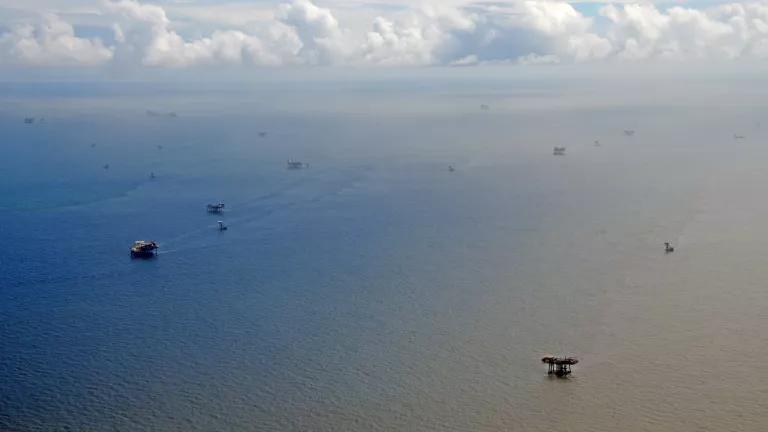
TransCanada—which was thwarted in its effort to drive Keystone XL through America’s heartland—is now pursuing a project that would effectively create a waterborne tar sands pipeline that would threaten the U.S. Atlantic and Gulf coasts. This proposed Canadian pipeline, Energy East, would bring as much as 1.1 million barrels per day of mostly tar sands oil from Alberta to Canada’s eastern seaport of Saint John, New Brunswick. From there, nearly 300 supertankers per year would form a high-risk “pipeline” down the entire U.S. Eastern Seaboard, from the tip of Maine to the Florida Panhandle, around Florida’s peninsula, and on to refineries along the Gulf Coast.
The tankers—representing a 300 percent increase in crude oil traffic in Nova Scotia’s ecologically critical Bay of Fundy—would pose a significant threat to endangered marine mammals and regionally critical fisheries in the form of deafening ocean noise and an increased risk of oil spills and ship strikes. Given that the National Academy of Sciences has concluded that emergency responders lack the tools to effectively contain and clean up diluted bitumen (the most common form of tar sands crude), the risk of a tar sands spill threatens vibrant and irreplaceable marine habitats all along the East Coast—along with economies that depend on them. The pipeline would also bring a significant increase in carbon pollution, equivalent to the annual emissions of as many as 54 million passenger vehicles, and lock in high-carbon infrastructure expected to operate for at least 50 years.
Despite the significant risks posed by Energy East, our analysis reveals that the scope of the forthcoming environmental review by Canadian authorities is sorely lacking. In this report, we offer a series of recommendations for reforming the current regulatory review process and propose several critical safety regulations for the United States and Canada, including:
- Imposing a tar sands oil tanker moratorium in U.S. and Canadian waters until appropriate spill response techniques are developed to address a diluted bitumen spill into water.
- Improving tanker operations to ensure that any impacts to marine mammals and ecosystems would be at a minimum.
- Amending Canada’s Environmental Assessment Act to improve public participation in the review process and ensure consideration of the environmental, health, and economic impact in areas ranging from where the oil is produced to its final destination.
- Getting the United States involved in the review process, ensuring that risks to shared resources are analyzed.
- Permanently protecting especially vulnerable and special ocean regions to eliminate, as much as possible, the threat oil spills and other marine accidents pose to these critical areas.
Proposed Energy East Pipeline Route and Expected Energy East Tanker Routes






